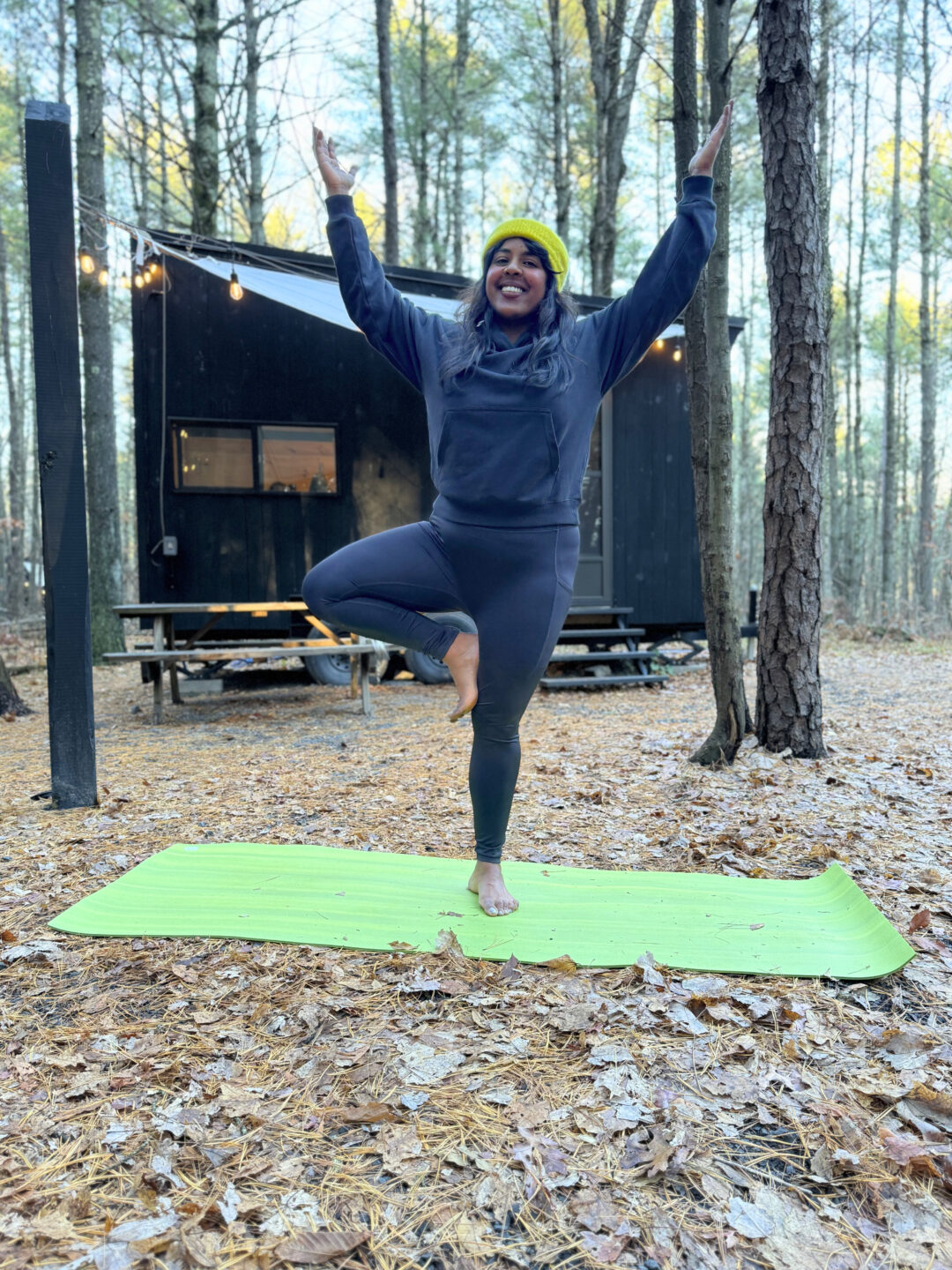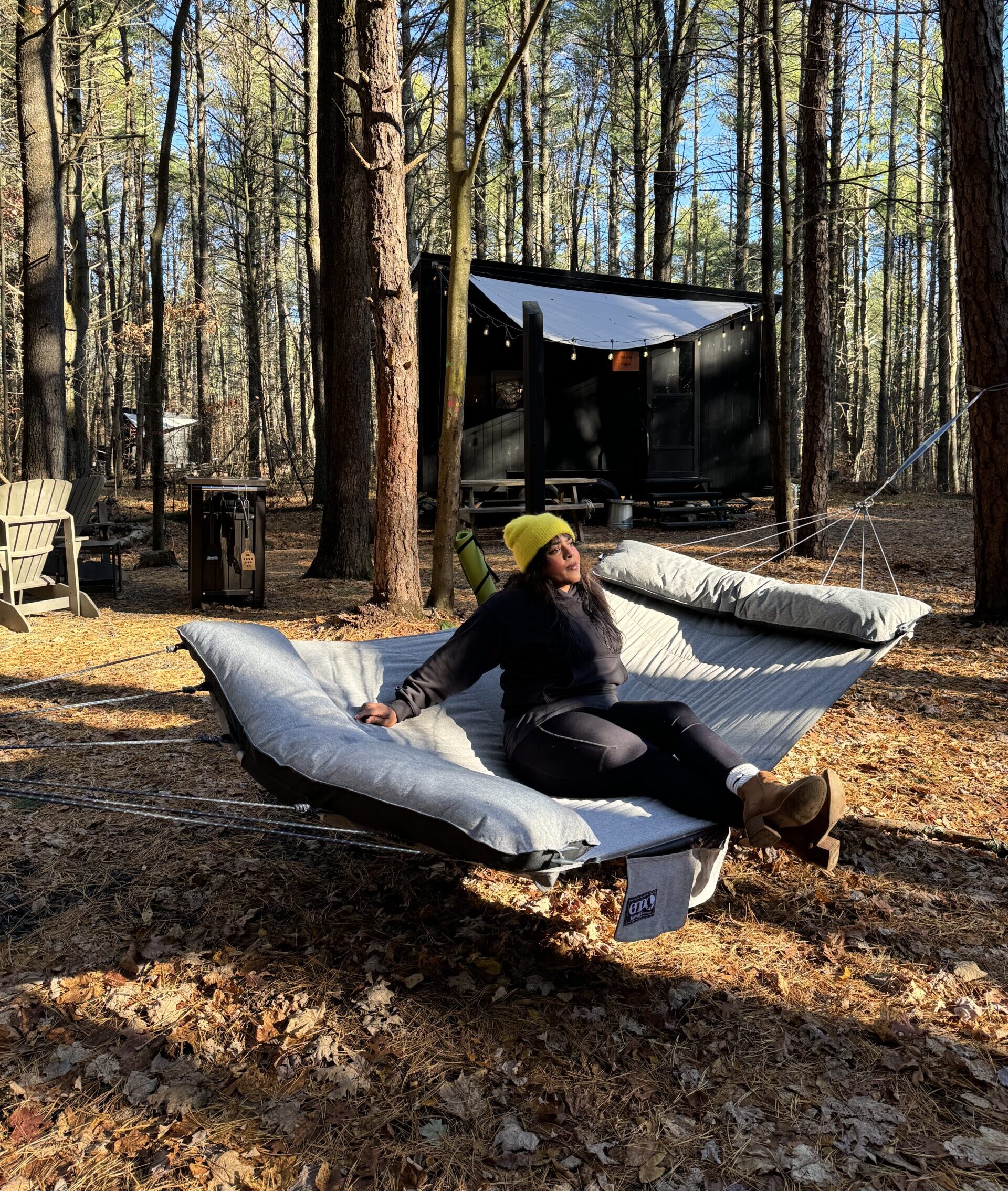The last few months of the year are always rife with change and intensity, overwhelming even the most prepared of us. At least, that’s the case with me. As a yoga teacher and entrepreneur who also works a full-time corporate job, I’m usually firing on all cylinders and often burn out before I even realize I was running low. That’s why I seriously needed to disconnect to reconnect. Enter: Postcard Cabins.
I recently stayed at Postcard Cabins Eastern Catskills, just a short 2-hour road trip north from New York City. Passing the fall colors as I drove deeper into the forest filled me with the sense of grounding and calm that I was craving. Yoga encourages us to connect to nature in order to better understand ourselves–and that’s exactly what I experienced. From practicing in the outdoor suite surrounded by tall trees, to mindfully swaying on the hammock, reading in bed, or even preparing a warm, nourishing meal in the kitchenette – Postcard Cabins gave me my peace back.

In the colder months I’m less inclined to practice faster, Vinyasa-style yoga sequences that build enough heat to get me sweating. Instead, I’m more drawn to slow postures that allow me to sink deeply into them and ground myself closer to the earth. Rest becomes essential in every way, from the length and spaciousness of my breath – all the way to taking extra time to soften my muscles and give my body permission to release.
If I were planning a weekend away at Postcard Cabins and wanted to be extra intentional about my yoga practice, here’s what I would do:
In Bed:
- Bound Angle pose (baddha konasana): Bring the soles of your feet together, interlace your fingers and bind them around your toes. Leading with your chest, gently lean forward before softening and dropping your chin down. Stay here and breathe 5-10 deep, slow breaths to get the full benefits.
- Seated twist (Marichyasana): Sit up nice and tall. Extend your right leg, then bend your left knee and draw your foot close to your seat. Hook your right elbow behind your left knee and take a gentle twist, looking over your shoulder. Take your time and keep the spine elongated so the breath travels freely. Stay here for 5 breaths, and then switch sides.
Out in Nature:
- Tree pose (vrkshasana): Stand comfortably and spread your toes out wide, pressing your full weight into the earth. Imagine that you are creating roots that go deep into the earth, giving you an unshakeable foundation. At the same time, engage your thigh muscles upward towards the hips. When you feel steady, draw one foot up the opposite leg and place the sole either above the ankle, below the knee, or against your inner thigh. Bring your palms together at your chest, or reach them up to the sky like branches. Pro tip: Practicing directly on the elements, called “earthing” is an amazing way to connect to nature.. Notice when you lose balance or sway, and experiment with re-engaging your strength versus leaning into the playfulness of the posture.
- Cobra pose (Bhujangasana): Lay down, facing your mat. Press the tops of your feet down to the earth and draw your inner thighs towards each other. Draw your belly in and press your palms down on the mat alongside your hips. Take a breath in as you lift your chest up, arching your back slightly. Exhale to release back down to the earth. Focus on the small movements that control your spine as you lift up and lower down.
Or perhaps your yoga practice during your weekend in nature might be laying down on the hammock and watching the forest breathe, feeling the dappled sun on your cheeks and the gentle breeze as it rustles your hair. Mindfulness is as quintessential to a strong yoga practice as movement – so do what serves you.
Happy connecting!

